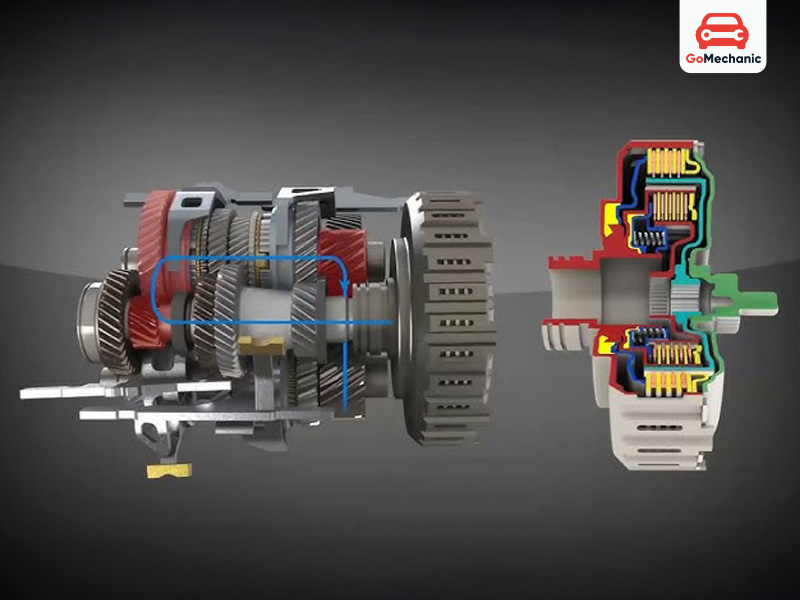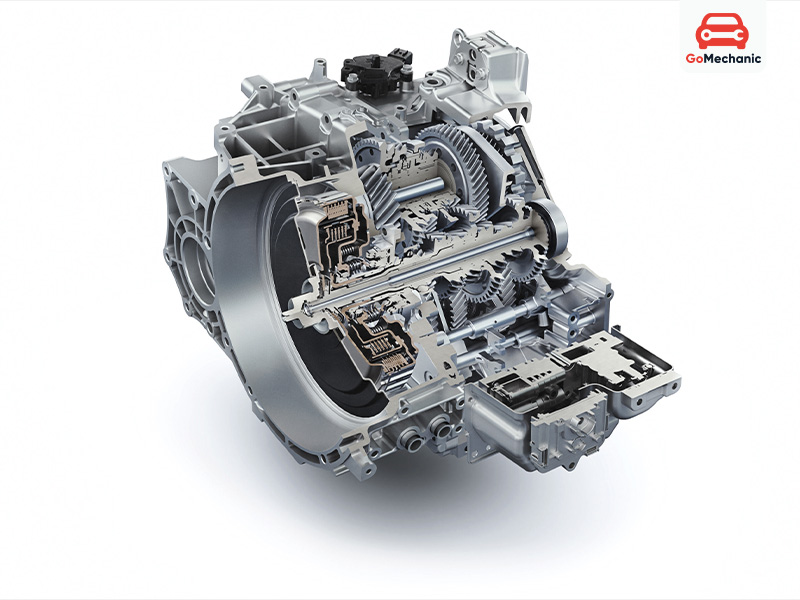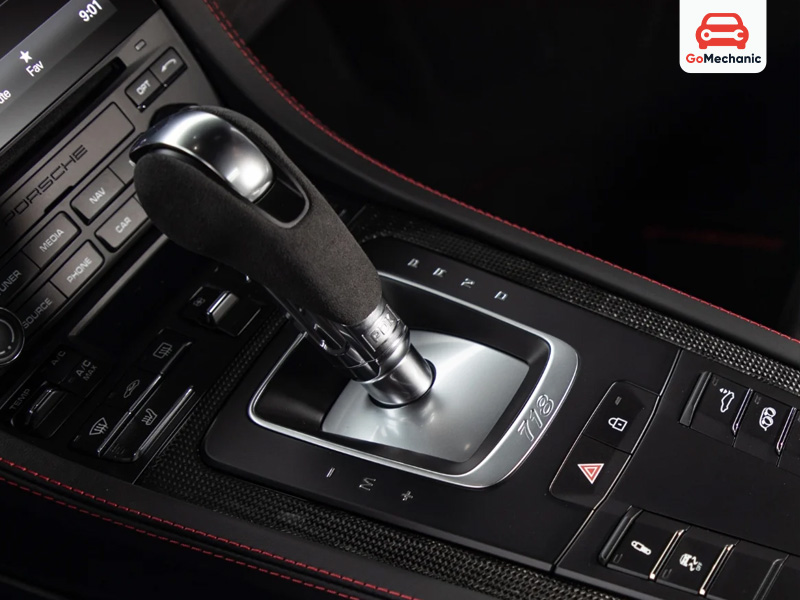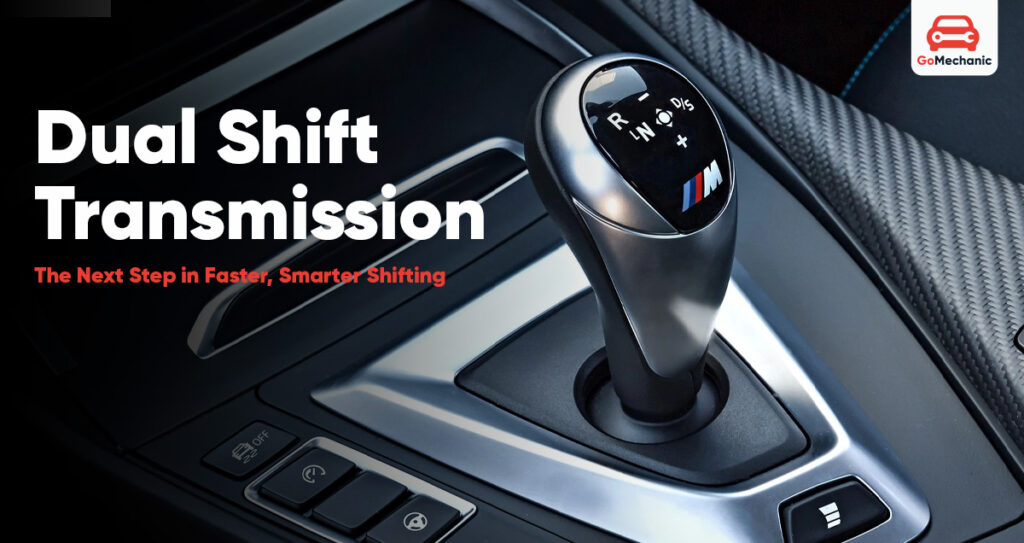Power. Precision. Speed. A Dual Shift Transmission (DST) is not just a gearbox. It’s evolution. A step ahead in transmission technology. Call it dual-clutch, twin-clutch, DSG, different names but same core. Faster shifts. Uninterrupted power. No lag. A transmission that doesn’t just change gears, but predicts them.
The result? Sharper acceleration. A more connected drive. Greater efficiency. All without the drawbacks of a traditional automatic. It’s about smart shifting.
But what exactly makes DST different? How does it work? Why do performance cars swear by it? And should it be in your next car?
What is a Dual Shift Transmission?
Fast shifts. Zero interruptions. That’s the core of a Dual Shift Transmission (DST). Unlike traditional automatics, DST doesn’t rely on a single clutch. Instead, it uses two. One for odd-numbered gears (1,3,5,7). Another for even-numbered gears (2,4,6).
Why two clutches? Because one is always ready. While the first clutch holds the current gear, the second is already preparing the next. No waiting. No delay. The moment you shift, power transfers instantly. It’s why sports cars use it. It’s why premium sedans prefer it. Even city cars are adopting it for better efficiency and smoother performance.
Less lag. Faster acceleration. A driving experience that feels sharper, more connected. That’s what DST brings to the table. It’s not just a gearbox. It’s an upgrade.
Read more: Manual vs Automatic Transmission: Understanding the Basics
How Does a Dual Shift Transmission Work?
The idea is simple. The execution? Complex.

Here’s what happens every time you shift:
- Current Gear Engaged: One clutch holds the current gear.
- Next Gear Pre-Selected: The second clutch prepares the next gear in milliseconds.
- Instant Shift: As the gear changes, one clutch releases while the other engages simultaneously.
- Continuous Power: No torque loss. No break in acceleration. Just smooth, lightning-fast shifts.
This split-second process is what makes DST so different from traditional automatics. It doesn’t wait. It predicts.
Dual Clutch Transmission vs. Twin Clutch Transmission: Same or Different?
Same tech. Different names.
Dual Clutch Transmission (DCT) and Twin Clutch Transmission (TCT)? No difference. Same system. Same mechanics. Just branding. Whether it’s called DST, DSG, or Powershift, the concept remains unchanged—two clutches, faster shifts, seamless power delivery. Dual clutch transmission and twin clutch transmission are the same.
But branding matters. Automakers love their trademarks.
- Volkswagen calls it DSG.
- Ford brands it Powershift.
- Porsche names it PDK.
- BMW goes with DCT.
At their core? Twin Clutch Transmission and others are the same dual-clutch engineering. The difference? Fine-tuning, software calibration, and how each brand configures it for different driving styles.
Some optimize for performance (Porsche PDK shifts aggressively). Some balance efficiency and comfort (Volkswagen DSG in daily drivers). Some tweak it for fuel economy (Ford Powershift in compact cars).
But the fundamentals remain unchanged. Two clutches. One gearbox. Zero lag. Faster than traditional automatics. Smoother than a manual. And an entirely different driving experience.
Types of Dual Shift Transmissions
DST comes in two versions—each designed for different power levels.

Wet Dual-Clutch Transmission (Wet DCT)
- Uses oil to cool the system.
- Handles more torque. Built for performance.
- Example: sports cars, luxury sedans, and powerful SUVs.
Dry Dual-Clutch Transmission (Dry DCT)
- Lighter and more efficient.
- Doesn’t use oil, reducing maintenance needs.
- Used in lower-powered engines, compact cars, and city commuters.
- Each has its place. Wet DCTs handle more power. Dry DCTs focus on efficiency.
Also read: Choosing the Right Types of Car Transmissions for Indian Roads: A Guide to Performance, Costs
Why Choose a Dual Shift Transmission?
- Faster Gear Shifts: Speed matters. DST shifts in milliseconds, delivering instant acceleration and smooth transitions.
- Increased Fuel Efficiency: With less torque loss and optimized shifting, a dual-shift transmission can improve mileage over traditional automatics.
- No Power Gaps. No Delays: Unlike a manual, DST pre-selects the next gear. One clutch releases, the other locks in—power flows without interruption.
4.4. Sporty, Engaging Drive: Love the control of a manual but not the clutch work? DST gives you rapid shifts with paddle controls—quick, precise, effortless.
- Adaptability for Every Drive: City traffic? Highway cruising? Spirited driving? DST adjusts.
Best Cars with Dual Shift Transmission (DST/DCT/DSG)
These cars bring DST technology to Indian roads:
- Hyundai i20 N Line – 7-Speed DCT for performance hatchback lovers.
- Kia Seltos – 7-Speed DCT in a feature-packed SUV.
- Hyundai Verna – Sporty sedan with a 7-Speed DCT option.
- Skoda Slavia – Available with 7-Speed DSG.
- Volkswagen Virtus – Shares the 7-Speed DSG with its Skoda cousin.
Each of these cars offers the speed, efficiency, and smooth shifts that DST is known for.
Problems with Dual Shift Transmission
It’s not all perfect. DST has some drawbacks you should know.
- Higher Complexity = Higher Cost
DST is more advanced than traditional automatics. That means more parts, more engineering, and a higher price tag.
- Maintenance Can Be Expensive
Wet DCTs need oil changes and regular servicing. If a clutch fails? Replacement isn’t cheap.
- Early Reliability Issues
Some early DST models had jerky shifts and overheating issues. While modern versions are better, it’s still a concern for long-term reliability.
- Driving Style Matters
DST performs best when driven aggressively. In stop-and-go traffic, excessive slow-speed crawling can cause wear.
Should You Choose a Dual Shift Transmission?
Who Should Get It?
- Performance lovers – If you love quick shifts and instant acceleration.
- Highway cruisers – Smooth power delivery makes long drives effortless.
- Tech enthusiasts – If you want cutting-edge transmission tech.

Who Should Skip It?
- Budget buyers – DST cars cost more than regular automatics.
- Low-maintenance seekers – Repairs and clutch replacements aren’t cheap.
- City-only drivers – Heavy traffic isn’t ideal for a twin-clutch system.
If you love performance and efficiency, DST is worth it. But if you want low maintenance and simple reliability, a CVT or torque converter automatic might be a better fit.
Know more about: Top 10 CVT Transmission Cars in India: Smooth, Efficient, and Affordable Choices
Final Verdict: Is Dual Shift Transmission the Future?
Yes, but not for everyone. DST is Fast, Efficient, Engaging. But Not Perfect. Blazing-fast shifts. No lag. No wasted power. That’s why DST is everywhere. From hatchbacks to sports cars. It’s faster. It’s more efficient. It keeps you connected to the drive.
But it’s not perfect. More parts. More complexity. More maintenance. When it works, it’s brilliant. When it fails? It’s expensive.
So, is it worth it? That depends on how you drive. It’s more expensive, more complex, and requires proper maintenance.
So, the real question is—Do you need it? Or do you just want it? If you’re after speed, smoothness, and efficiency, DST is the best of both worlds. If not? There are simpler, more forgiving transmissions out there.
Choose wisely. Drive smarter.

